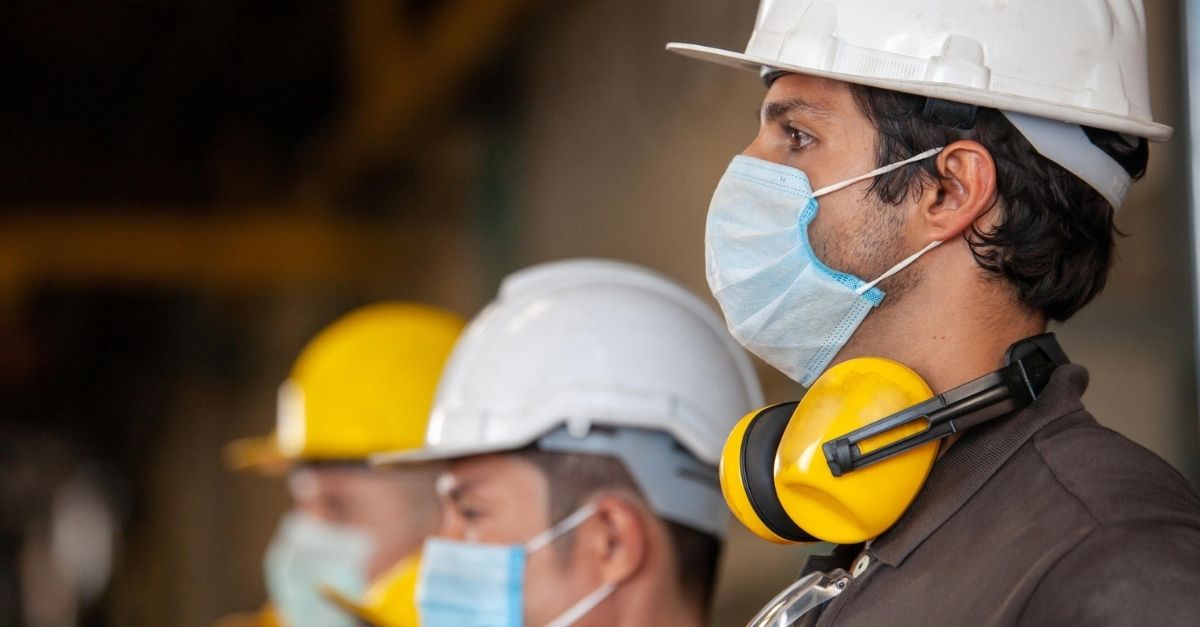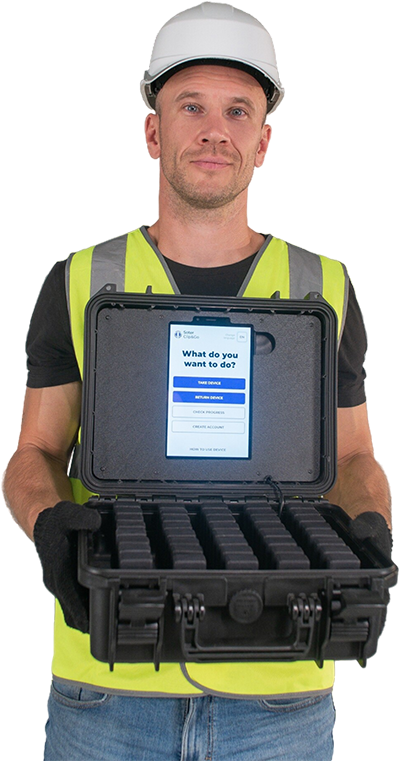Return to Work after COVID19 – Urging Safety Managers to ACT NOW to Prevent Injuries
Workers returning to work after being furloughed are putting their bodies at risk due to no longer being at full working strength. The world is about to see the biggest return to work program ever faced.

Workers returning to work after being furloughed are putting their bodies at risk due to no longer being at full working strength. The world is about to see the biggest return to work program ever faced.
If not managed, the manual workers body is at high risk of injury.
Safety Managers are being urged to consider the impact that the time off due to the novel Coronavirus has had on returning workers bodies. Thought must be given to those that have been off work, perhaps very isolated at home, eating, drinking and doing a lot of sedentary activities. Usual job tasks have not been practiced and these workers could now be considered a high risk and ‘unfit’ for duty initiating one of the biggest return to work programs ever faced by health and safety managers.
Early intervention programs and processes need to be put in place immediately to stop problems escalating. All exposures surrounding this imminent problem need mitigating including the consideration not just of the physiological impacts but of the psychosocial concerns arising from the pandemic that will be playing a part in capacity, presentation and conduct of these employees.
Physiological Impact
Adopting time to carve out a warming up procedure is now more important than ever, not just for the physiological reasons but to help workers check in with their bodies and bring awareness to how they are feeling. It is very easy to expect our bodies to act accordingly and not take into consideration the impact of time off from movement, or time off from any specific type of movement, like that done at work.
An increase in sedentary behaviour has many side effects that are not beneficial to the health and wellbeing of our musculoskeletal system. Weight gain, a decline in aerobic capacity, muscle wastage, decrease in proprioception are to name a few. Amy Hope, Chief Ergonomist and Osteopath from Soter Analytics explains how this is relevant to the retuning manual handling worker: –
“Muscle strength can fall after just two weeks of inactivity, and those with more muscle strength to begin with will lose more. Other activities such as cycling can help to regain muscle mass, but muscle strength on the other hand requires using weights like those lifted or handled before. It can also take more than three times the amount of time to regain the strength lost through immobility. (4). The other very significant aspect to be aware of is proprioception. Proprioception deteriorates with sedentary lifestyle. This is the body’s way of understanding the position of itself in space, or body position awareness. This is important in manual handling tasks, as understanding whether your own body is following the positions outlined in training or taking positions that may cause harm is key in understanding workers own risk..” (5)
Psychosocial Impact
Consideration of the psychosocial risk factors that will now be present as a by-product from the coronavirus need to be part of an overall approach to maintaining safety. The effects of physical exposures are increased when any psychosocial factors are also involved. (1)
Anxiety is one of the largest and research shows that when above its normal level, the immune system is weakened. (2) Supporting employees, acknowledging the current situation and putting measures in place to help with stress levels is imperative.
Different workplace psychosocial factors resulting from being furloughed, changes due to the impact of the pandemic, along with fear of being infected can originate from many areas:
Lower predictability in work caused by disturbances or unexpected changes – this represents a salient health hazard (6)
Stress – especially those employees exposed to public areas and anxiety relating to social distancing
Job insecurity
Role or work conflicts due to changes of staffing, downsizing, restructuring
Time pressures – frustration in not being able to do the work at the same pace, especially if they are paid based on efficiency/picks
Concentration might need to be trained
Fatigue likely to be a greater and cause drop in safety critical attention span or alertness
Increase in likelihood of errors due to any of the factors above
Early Intervention Programs for Return to Work
Most injuries develop slowly, and supervisors do not have the tools to support workers who start to feel pain and often nothing is done. Early intervention programs can assist workers to take note and simply be aware of their moving bodies especially as they are returning from time off, it is imperative to make sure they focus on best movement practice, stretching and strengthening exercises. Workers should be trained to listen to their body, understand how to recognize the early signs and symptoms of possible injury and how to prevent it.
A standard early intervention program specialising in building awareness, coaching around safe movement and easy correction that clearly outlines the implications of ignoring signs not only helps protect from injury but facilitates and encourages an early reporting culture. Early interventions stops the hesitation and stigma around early reporting and empowers employees to take control of their own bodies.
Employees need to be coached and assisted with developing their physical awareness to determine if their discomfort is arising from muscles simply waking back up or if there is potential for injury. Have systems ready to go with immediate clear strategies that workers are aware of to assist those who are feeling discomfort due to returning to work. This not on supports them physically but psychologically has an impact on any possible feelings of anxiety or stress.
Efficiency Expectations
Expectations of efficiency also need to be assessed. Especially now if workers are struggling financially and want to make money if they’re paid by shift length or even worse, their pick/efficiency. There will be a tendency for workers to want to move faster but considering all the physiological or psychosocial impacts after time off from a pandemic, this is not the time. It’s important for companies not to have workers hit the ground running as soon as things restart but review the conditioning of the workforce first. Safety managers might want to reach out to support the fitness and wellbeing of their workers now to help with this, to build a foundation of strength rather than waiting until the first day of work. Work hardening and building employees back up to the stamina that they need to work and prevent problems.
Conclusion
This current situation of many workers returning from time off, is a great opportunity for employers to assess their workforce, connect, recalibrate and monitor strength levels, fatigue, emotions, pain or any of the factors that influence movement behaviour. Work together to provide the best possible chance of minimising strain on these workers’ bodies and reduce the occurrence of recordable injures and related costs.
Originally published at SHP on June 15, 2020.
About Soter Analytics
Soter Analytics is a global safety science company producing AI-supported wearable solutions that reduce the risk of ergonomic injuries in the workplace. Soter wearables are widely used in logistics, manufacturing, healthcare and other industries, helping leading companies to prevent up to 55% of back & shoulder musculoskeletal injuries.
To see how Soter Analytics can help you improve safety behaviour, engage employees to self-manage their training and prevent workplace ergonomic injuries, simply Book a FREE Demo today.
References
Lund, Thomas et al. “Physical Work Environment Risk Factors for Long Term Sickness Absence: Prospective Findings Among a Cohort of 5357 Employees in Denmark.” BMJ 332.7539 (2006): 449–451. Web.
Moghanibashi-Mansourieh, Amir. “Assessing the Anxiety Level of Iranian General Population During COVID 19 Outbreak.” Asian Journal of Psychiatry 51 (2020): 102076–. Web.
World Health Organisation. (2020) Mental Health and Psychosocial Considerations during the COVID-19 Outbreak. Retrieved from https://www.who.int/docs/default-source/coronaviruse/mental-health-considerations.pdf
Vigelsø, Andreas et al. “Six Weeks’ Aerobic Retraining after Two Weeks’ Immobilization Restores Leg Lean Mass and Aerobic Capacity but Does Not Fully Rehabilitate Leg Strength in Young and Older Men.” Journal of rehabilitation medicine 47.6 (2015): 552–. Web.
Adamo, Diane E, Neil B Alexander, and Susan H Brown. “The Influence of Age and Physical Activity on Upper Limb Proprioceptive Ability.” Journal of aging and physical activity 17.3 (2009): 272–293. Web.
Vaananen, Ari et al. “Lack of Predictability at Work and Risk of Acute Myocardial Infarction: An 18-Year Prospective Study of Industrial Employees.” American Journal of Public Health 98.12 (2008): 2264–2271. Web.


